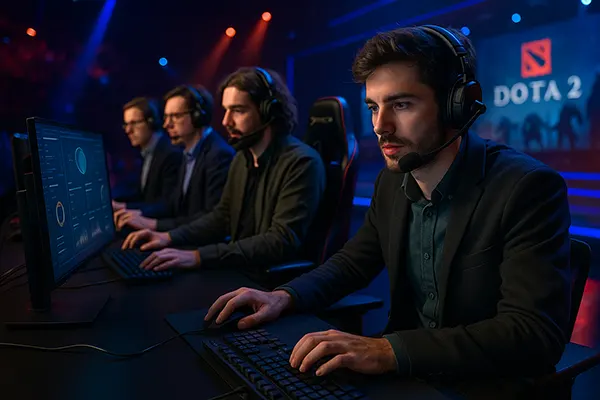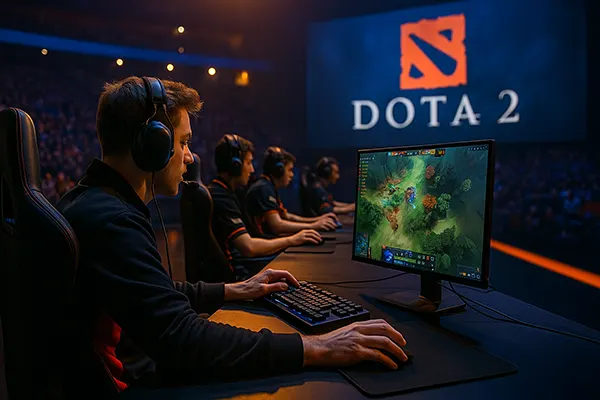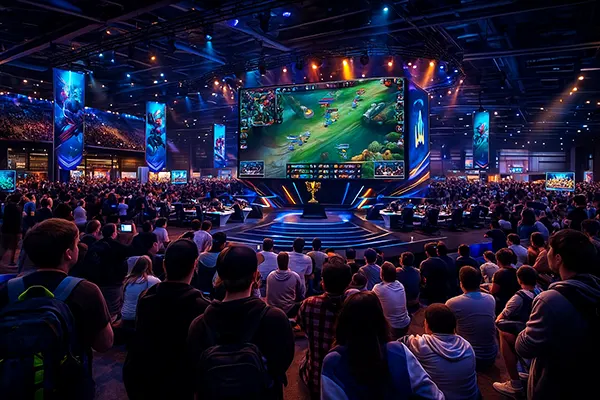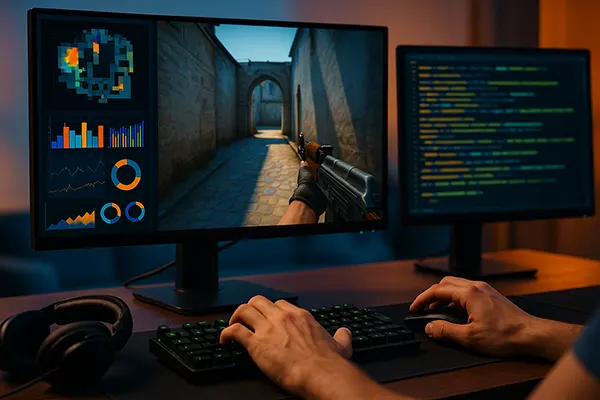How Real-Time Analytics Works During Tier-1 Dota 2 Matches: Interview with Analysts

Dota 2 has evolved far beyond casual matchmaking and local LAN events. At the Tier-1 level, it’s a competitive spectacle watched by millions, and every second counts. Behind the polished broadcasts lies a sophisticated layer of real-time analytics that enables teams, commentators, and even viewers to make sense of the chaos. To better understand how these systems work, we spoke with experienced esports analysts who explained what happens behind the scenes during high-stakes matches.
The Role of Real-Time Data in Dota 2 Tournaments
During a Tier-1 Dota 2 match, real-time data collection begins the moment the draft starts. Every pick, ban, and player movement is instantly captured by advanced tracking tools. These systems process large volumes of information, from item builds to ward placement, allowing coaching staff and broadcasters to contextualise the game’s dynamics within seconds.
Many teams employ custom dashboards that provide filtered information relevant to specific strategies. For instance, heatmaps showing where each player spends most of their time or damage breakdowns by ability help analysts identify trends. These insights are often crucial during drafting phases of a best-of-three series, where adaptation determines the outcome.
Broadcasters also benefit from these analytics. Real-time stats like “Win Probability” or “GPM Differential” are generated automatically and used to enhance storytelling. These numbers aren’t arbitrary—they reflect historical outcomes across thousands of similar matches, giving fans a deeper understanding of in-game decisions.
Challenges in Real-Time Processing
Processing data in real time is a technical and logistical challenge. According to analysts, latency and packet loss can distort interpretations, especially during LAN events where network loads are heavy. That’s why dedicated servers are often used for analytics separate from the game server itself.
Another issue is data overload. Not all information is useful mid-match, so analysts must filter what’s relevant in the moment. A spike in creep score might be meaningless unless it’s in the context of a key team fight or objective timing. Analysts prioritise data points that tell a story, rather than flooding teams with raw numbers.
Teams also need to ensure that data collection doesn’t violate tournament rules. Most Tier-1 events have strict policies on live coaching and third-party software. Analysts often work within specific parameters, delivering reports between games or through pre-approved channels.
Tools and Technologies Behind the Scenes
The infrastructure behind real-time analytics has become increasingly specialised. Tools like Oracle’s Elixir, Shadow, and proprietary Dota APIs are standard. These platforms extract data from the Dota 2 game state and push it into visualisation layers used by analysts, broadcasters, and coaching staff.
Machine learning plays a growing role in predictive analytics. Some teams develop models trained on past match data to predict gank timings, successful rotations, or lane win probabilities. This allows teams to prepare contingencies during pauses or timeouts.
Third-party services like STRATZ and DotaPlus also offer real-time APIs that deliver enhanced dashboards, which are frequently customised for individual teams. These tools support features like predictive item suggestions, risk assessment, and timeline annotations—adding depth to tactical analysis in-game and post-match.
Integration with Coaching Staff
Real-time analytics is only valuable if it can be acted upon. Coaches often use a second screen or earpiece to receive filtered insights from analysts positioned outside the team’s booth. The information flow must be quick, clear, and legally compliant under tournament regulations.
Some organisations build ‘playbooks’ that update live based on real-time inputs. If a team sees the opponent diverge from their expected strategy, they can switch to a counter-strategy on the fly. This level of responsiveness gives teams a tactical edge that’s hard to match.
Between games, analysts compile quick summaries highlighting key takeaways: jungle efficiency, vision control ratios, and team fight success rates. These summaries feed directly into coaching decisions for the next draft or side selection.

The Human Element in Analytical Decision-Making
Despite advances in technology, the analyst’s intuition remains crucial. Data can only go so far without context, and it’s up to experts to translate numbers into strategy. That includes knowing when to trust trends and when to discard outliers that could mislead the team.
Interviewed analysts noted that synergy with players matters. Not every player reacts the same way to stats—some prefer raw metrics, while others look for narrative context. The best analysts tailor their reports to match each individual’s way of absorbing information.
Ultimately, real-time analytics is a collaborative process. It blends technical skill, in-game understanding, and communication finesse. When done well, it becomes a silent partner in every Tier-1 Dota 2 team’s quest for victory.
Future Trends and Evolving Roles
Looking ahead, real-time analytics in Dota 2 is set to become even more granular and predictive. With the integration of neural networks and enhanced simulation engines, teams may soon model entire late-game scenarios on the fly based on live match input.
Increased automation will also redefine the analyst’s role. Rather than compiling raw data, the focus will shift toward scenario testing and tactical adaptation. This change will likely create new roles at the intersection of game theory, psychology, and data science.
As Tier-1 tournaments grow in scale and complexity, the demand for sharp, real-time insight will only intensify. Analysts will remain behind the scenes, but their impact will be felt in every clutch play and perfectly timed rotation.



